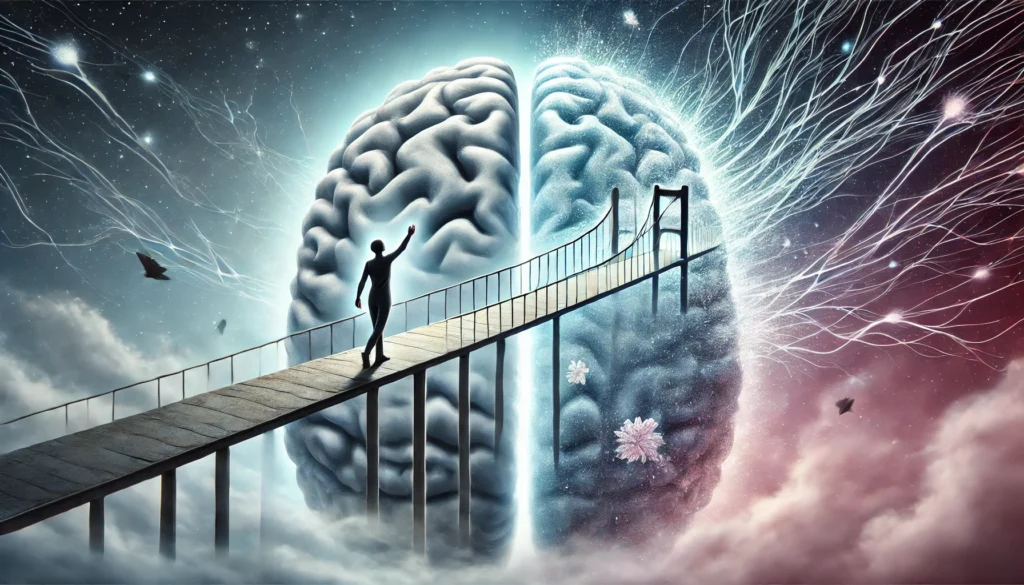Amnesia has been a subject of fascination for centuries, with records dating back to ancient civilizations. Historically, it was often associated with mystical forces or divine punishment. The evolution of medical science has since demystified many aspects of amnesia, providing insights into its varied forms and underlying causes.
You may also like: Tips to Improve Low Average Memory Performance
Ancient Beliefs and Myths
In ancient times, amnesia was frequently interpreted through the lens of myth and religion. Many believed it to be a curse from the gods or a sign of spiritual possession. These interpretations influenced early treatments, which often involved rituals or prayers aimed at appeasing deities or expelling spirits.
The Shift to Scientific Inquiry
The Enlightenment era marked a shift from mystical explanations to scientific inquiry. Researchers began to examine the brain more closely, seeking tangible explanations for memory loss. This transition laid the groundwork for modern neuroscience and our current understanding of amnesia.
Milestones in Amnesia Research
Significant milestones in amnesia research have shaped our current knowledge. The discovery of the hippocampus’s role in memory formation, for example, was pivotal. Landmark studies, such as those involving patient H.M., have provided invaluable insights into the mechanisms of memory and amnesia.
The Role of Memory in Amnesia
Memory is a complex process involving the encoding, storage, and retrieval of information. When any of these processes are disrupted, it can result in amnesia. The brain structures primarily involved include the hippocampus, amygdala, and certain regions of the frontal cortex. Damage to these areas, whether through injury, disease, or psychological factors, can lead to different types of amnesia.
Encoding: The First Step
Encoding is the initial process where sensory input is transformed into a format that can be stored. Disruptions in this stage can prevent new memories from forming, as seen in anterograde amnesia. This involves various brain regions working in harmony to process and integrate information.
Storage: The Preservation of Memories
Once encoded, information must be stored for future retrieval. Different types of memories (e.g., procedural vs. declarative) are stored in different brain areas. The storage phase can be compromised by conditions affecting neural connectivity, leading to various forms of amnesia.
Retrieval: Accessing Stored Information
Retrieval involves accessing stored memories when needed. Failures in retrieval can result from stress, trauma, or neurological damage. Understanding the retrieval process is crucial for developing therapies to assist individuals with amnesia in regaining access to lost memories.
Different Types of Amnesia
Amnesia manifests in several distinct forms, each with unique characteristics and implications for memory function. Understanding these variations is essential for effective diagnosis and treatment.
Anterograde Amnesia
Anterograde amnesia is characterized by an inability to form new memories following the onset of amnesia. This type is often associated with damage to the hippocampus and is frequently observed in individuals with traumatic brain injury or certain neurological conditions. Patients can recall past events but struggle to remember new information, impacting daily functioning and learning.
Causes and Risk Factors
Anterograde amnesia can result from various factors, including traumatic brain injuries, infections, or chronic conditions like Alzheimer’s disease. Risk factors may include age, genetic predispositions, and lifestyle choices that affect brain health.
Daily Challenges and Coping Strategies
Individuals with anterograde amnesia face significant daily challenges, from remembering appointments to forming new relationships. Coping strategies often involve the use of memory aids, structured routines, and support systems to help maintain a semblance of normalcy.
Research and Therapeutic Advances
Ongoing research aims to understand the neural mechanisms underlying anterograde amnesia better. Advances in neuroimaging and cognitive rehabilitation techniques offer hope for more effective interventions and therapies.
Retrograde Amnesia
In contrast to anterograde amnesia, retrograde amnesia involves the loss of pre-existing memories prior to the onset of the condition. The extent of memory loss can vary from a few months to several years. Retrograde amnesia is often linked to brain injuries, such as concussions, and conditions like Alzheimer’s disease. Interestingly, patients may retain their ability to form new memories.
Understanding Memory Loss Patterns
The pattern of memory loss in retrograde amnesia can provide insights into the brain’s memory storage processes. Researchers study these patterns to determine how memories are organized and accessed within the brain.
Emotional and Psychological Impact
Losing past memories can have profound emotional and psychological effects. Individuals may experience identity crises, depression, or anxiety as they grapple with the loss of personal history and identity.
Rehabilitation and Support
Rehabilitation for retrograde amnesia focuses on helping individuals rebuild their lives and identities. Support from therapy, family, and peer groups plays a vital role in emotional recovery and adaptation.

Transient Global Amnesia
Transient global amnesia (TGA) is a temporary and sudden episode of memory loss that is not attributed to neurological events like epilepsy or stroke. During an episode, an individual may experience both anterograde and retrograde amnesia. The exact cause remains unclear, though some hypotheses suggest a link to migraines or brief disruptions in blood flow to the brain.
Triggers and Symptoms
TGA episodes are often triggered by physical or emotional stress, exertion, or sudden immersion in cold water. Symptoms include sudden confusion, inability to recall recent events, and repetitive questioning.
Diagnosis and Evaluation
Diagnosing TGA involves ruling out other potential causes of memory loss, such as stroke or seizures. Medical evaluations often include imaging studies and neurological assessments to ensure accurate diagnosis.
Prognosis and Recurrence
TGA is generally benign, with episodes resolving within 24 hours. The prognosis is excellent, but individuals are advised to monitor for recurrence and manage potential triggers to minimize future episodes.
Dissociative Amnesia
Dissociative amnesia is a psychological condition where memory loss occurs due to severe stress or trauma. Unlike other forms of amnesia, there is no physical damage to the brain. Instead, the mind blocks out specific information, usually related to a traumatic event, to cope with emotional distress. This type can range from localized amnesia, affecting a specific period, to generalized amnesia, affecting one’s entire life history.
Psychological Mechanisms
The psychological mechanisms behind dissociative amnesia involve the mind’s defense against overwhelming stress. The brain may compartmentalize traumatic memories, rendering them inaccessible to conscious awareness.
Treatment and Recovery
Treatment for dissociative amnesia focuses on psychotherapy to address underlying trauma. Therapists use techniques such as CBT and EMDR to help individuals process and integrate traumatic memories.
Social and Personal Implications
Dissociative amnesia can impact personal relationships and social functioning. Individuals may struggle with trust issues, emotional regulation, and maintaining interpersonal connections, necessitating comprehensive support systems.
Childhood Amnesia
Childhood amnesia, also known as infantile amnesia, refers to the inability of adults to recall memories from early childhood. While not a disorder per se, it is a fascinating phenomenon that highlights the developmental changes in the brain. Researchers believe it results from the ongoing maturation of the brain regions involved in memory storage and retrieval.
Developmental Theories
Several theories attempt to explain childhood amnesia, including the role of language development and neurological maturation. Understanding these developmental aspects can shed light on how memory functions evolve over time.
Neurological Underpinnings
The neurological underpinnings of childhood amnesia involve the growth and development of brain structures like the hippocampus. This development influences how memories are encoded and stored during early childhood.
Implications for Memory Research
Studying childhood amnesia provides valuable insights into memory formation processes. It offers a unique perspective on how early experiences shape memory capabilities and cognitive development.
Amnesia Disease Treatment and Management
The treatment of amnesia is contingent upon its underlying cause. While some forms of amnesia are irreversible, others may be managed or improved through various interventions.
Medical and Therapeutic Interventions
For amnesia resulting from brain injury or disease, medical treatment focuses on addressing the root cause. This may involve medications, surgery, or therapies targeting neurological health. Cognitive rehabilitation, a therapy designed to improve cognitive function, can be beneficial in helping patients regain lost skills and adapt to their condition.
Pharmacological Approaches
Pharmacological interventions may include medications aimed at treating underlying conditions, such as anti-inflammatory drugs for brain injuries or acetylcholinesterase inhibitors for Alzheimer’s disease. These medications can help stabilize or improve cognitive function.
Surgical Options
In cases where structural abnormalities or tumors contribute to amnesia, surgical interventions may be necessary. Surgery can alleviate pressure on brain regions critical for memory, potentially restoring some memory functions.
Cognitive Rehabilitation Techniques
Cognitive rehabilitation focuses on enhancing memory and cognitive skills through targeted exercises. Techniques such as memory drills, computer-assisted programs, and neurofeedback can improve memory retention and retrieval.
Psychological Approaches
In cases of dissociative amnesia, psychotherapy is often the primary treatment modality. Techniques such as cognitive-behavioral therapy (CBT) or eye movement desensitization and reprocessing (EMDR) can aid individuals in processing traumatic memories and reducing psychological distress.
Cognitive-Behavioral Therapy
CBT helps individuals identify and change negative thought patterns related to their memory loss. By addressing these cognitive distortions, patients can develop healthier coping strategies and improve emotional resilience.
EMDR and Trauma Processing
EMDR is particularly effective for trauma-related amnesia. This therapy involves guided eye movements to help individuals reprocess traumatic memories, reducing their emotional impact and increasing memory accessibility.
Integrative Therapeutic Approaches
Integrative therapies combine various psychological techniques to address the multifaceted nature of dissociative amnesia. These approaches may include mindfulness, narrative therapy, and art therapy to facilitate healing and memory recovery.
Lifestyle and Supportive Strategies
For all types of amnesia, supportive care is crucial. This includes creating a structured environment, using memory aids like calendars and journals, and engaging in activities that stimulate cognitive function. Support from family and caregivers can also play a vital role in the patient’s journey towards recovery or adaptation.
Structured Environments
A structured environment helps individuals with amnesia navigate daily life more easily. Consistent routines, clear labeling, and organization reduce confusion and enhance memory recall.

Memory Aids and Technology
Memory aids, such as digital calendars, alarms, and note-taking apps, provide external support for memory challenges. Technological advancements in smart devices offer innovative solutions for managing amnesia-related difficulties.
Family and Caregiver Support
Family involvement and caregiver support are essential for emotional well-being and rehabilitation. Educating loved ones about amnesia can foster empathy and create a supportive network for recovery.
Future Directions and Implications
The study of amnesia continues to evolve, with ongoing research shedding light on its mechanisms and potential treatments. Advances in neuroimaging, for instance, have provided a deeper understanding of the brain’s structure and function, paving the way for more targeted interventions. The exploration of nootropics and biohacking techniques also holds promise for enhancing cognitive health and mitigating the effects of memory disorders.
Advances in Neuroimaging
Neuroimaging technologies like fMRI and PET scans offer unprecedented insights into the brain’s functioning. These tools enable researchers to visualize brain activity during memory tasks, enhancing our understanding of amnesia and informing treatment strategies.
Nootropics and Cognitive Enhancement
Nootropics, or cognitive enhancers, are being explored for their potential to improve memory and cognitive function in individuals with amnesia. These substances, ranging from natural supplements to synthetic compounds, could offer new avenues for treatment.
Ethical Considerations and Future Research
As research progresses, ethical considerations surrounding memory manipulation and enhancement arise. Balancing scientific advancement with ethical responsibility is crucial as we explore new frontiers in memory research.

Conclusion
Amnesia, with its myriad forms and causes, presents a unique challenge to both medical professionals and researchers. By unraveling the complexities of this condition, we gain not only a deeper appreciation for the intricacies of human memory but also the potential to improve the lives of those affected. Whether through medical intervention, psychological support, or lifestyle adjustments, there is hope and help available for those navigating the challenges of amnesia.
Through continued research and understanding, we can aspire to further demystify amnesia, offering more effective treatments and ultimately enhancing the quality of life for individuals impacted by this enigmatic condition. By fostering collaboration among scientists, clinicians, and caregivers, we can build a comprehensive support system for those affected by amnesia, paving the way for more hopeful futures.
Further Reading:
Important Note: The information contained in this article is for general informational purposes only, and should not be construed as health or medical advice, nor is it intended to diagnose, prevent, treat, or cure any disease or health condition. Before embarking on any diet, fitness regimen, or program of nutritional supplementation, it is advisable to consult your healthcare professional in order to determine its safety and probable efficacy in terms of your individual state of health.
Regarding Nutritional Supplements Or Other Non-Prescription Health Products: If any nutritional supplements or other non-prescription health products are mentioned in the foregoing article, any claims or statements made about them have not been evaluated by the U.S. Food and Drug Administration, and such nutritional supplements or other health products are not intended to diagnose, treat, cure, or prevent any disease.


